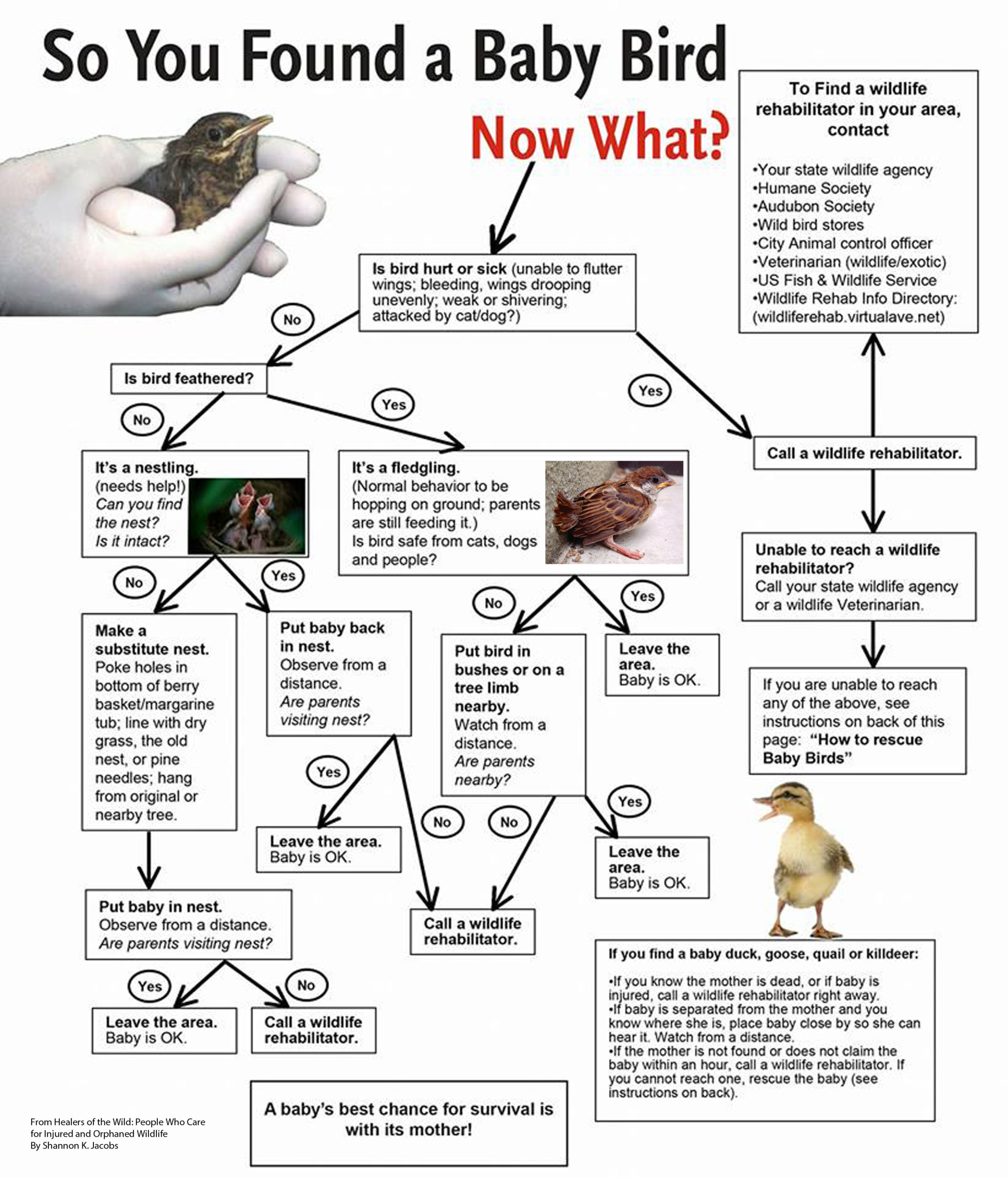
Wild Baby Bird Care: A Comprehensive Guide
Introduction
Encountering a baby bird outside its nest can be a heartwarming experience, but it also brings with it a responsibility to provide proper care. While the instinct may be to intervene, it’s crucial to understand the potential risks and benefits before taking action. This comprehensive guide will provide detailed instructions on how to assess the situation, determine if intervention is necessary, and provide appropriate care for wild baby birds.
Assessing the Situation
- Observe the bird from a distance: Avoid approaching the bird directly as this can cause unnecessary stress. Observe its behavior, appearance, and surroundings.
- Determine if the bird is orphaned: If the bird is on the ground and unable to fly, it may be orphaned. Check for any visible injuries or signs of distress.
- Consider the species: Different bird species have different needs and care requirements. Identify the species of the bird to determine the appropriate course of action.
Determining if Intervention is Necessary
- Healthy and active birds: If the bird is alert, active, and has no visible injuries, it is likely healthy and does not require intervention. Leave it alone and observe it from a distance.
- Injured or distressed birds: If the bird is injured, distressed, or unable to fly, intervention may be necessary. Approach the bird cautiously and gently.
- Orphaned birds: Orphaned birds are vulnerable and require immediate care. They are typically found on the ground, unable to fly, and may be cold or dehydrated.
Providing Appropriate Care
1. Warmth and Hydration
- Warm the bird: Place the bird in a small, warm, and dark container lined with a soft cloth or paper towels.
- Hydrate the bird: Offer the bird a few drops of water or electrolyte solution using a dropper or syringe. Do not force the bird to drink.
2. Nutrition
- Feed the bird: Baby birds require a specialized diet. For most species, a mixture of commercial insectivore food and water can be used.
- Feeding frequency: Feed the bird every 15-30 minutes during daylight hours.
- Avoid overfeeding: Only feed the bird until its crop (a small pouch under the beak) is full.
3. Housing
- Provide a safe and secure enclosure: Use a small box or container with ventilation holes. Line the enclosure with a soft cloth or paper towels.
- Keep the enclosure clean: Regularly remove any soiled materials and replace them with fresh ones.
4. Medical Care
- Seek veterinary attention: If the bird has any visible injuries or shows signs of illness, seek veterinary attention immediately.
- Do not administer medications: Do not give the bird any medications without consulting a veterinarian.
5. Release
- Release criteria: The bird should be fully feathered, able to fly, and eating independently before it can be released.
- Soft release: Gradually introduce the bird to the outdoors by placing it in a sheltered area for a few hours each day.
- Hard release: Release the bird directly into its natural habitat.
Special Considerations
- Fledglings: Fledglings are young birds that have recently left the nest but are not yet fully capable of flying. They may appear clumsy and unable to fly, but they are not necessarily orphaned. Observe them from a distance and intervene only if they are injured or in danger.
- Nestlings: Nestlings are young birds that are still in the nest. They are completely dependent on their parents for food and care. If you find a nestling outside the nest, return it to the nest if possible. If the nest is destroyed or inaccessible, contact a wildlife rehabilitator.
- Migratory birds: Migratory birds are protected by federal law. It is illegal to keep them in captivity. If you find a migratory bird in need of care, contact a wildlife rehabilitator.
Conclusion
Caring for wild baby birds can be a rewarding experience, but it requires a deep understanding of their needs and the potential risks involved. By following the guidelines outlined in this article, you can provide appropriate care for these vulnerable creatures and help them return to their natural environment. Remember, the best course of action is often to leave healthy birds alone and observe them from a distance. If intervention is necessary, proceed with caution and seek professional help if needed.
